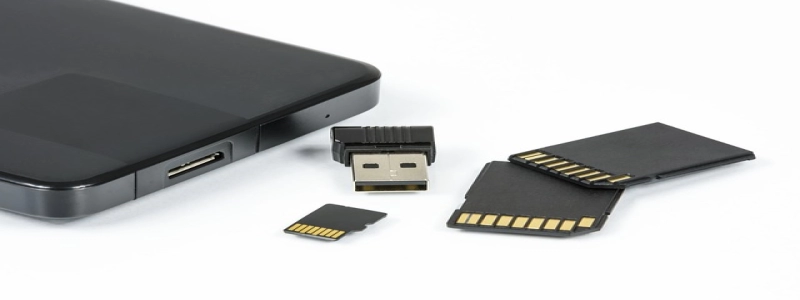Ethernet Automotive
1. Introduction
1.1 Brief Overview of Ethernet
1.2 Growing Importance of Ethernet in Automotive Industry
2. Ethernet Applications in Automotive
2.1 Advancements in Vehicle Connectivity
2.2 Autonomous Driving and Advanced Driver Assistance Systems (ADAS)
2.3 Infotainment Systems
2.4 Vehicle Diagnostics and Maintenance
2.5 Reduced Wiring Complexity
3. Benefits of Ethernet in Automotive
3.1 Higher Bandwidth and Faster Data Transfer
3.2 Improved Reliability and Safety
3.3 Cost-Efficiency and Scalability
3.4 Enhanced Flexibility and Upgradability
4. Challenges and Solutions
4.1 EMI and Electrical Noise Mitigation
4.2 Network Security and Data Privacy
4.3 Compatibility with Existing Automotive Protocols
4.4 Interoperability and Standardization
5. Future Outlook
5.1 Adoption of Higher Ethernet Speeds
5.2 Integration with 5G Technology
5.3 Ethernet in Electric Vehicles
5.4 Development of Automotive-specific Ethernet Standards
1. Introduction
1.1 Brief Overview of Ethernet
Ethernet is a widely used networking technology that enables devices to communicate with each other over a local area network (LAN). It has been the standard choice for wired networking in homes, offices, and data centers for several decades.
1.2 Growing Importance of Ethernet in Automotive Industry
In recent years, Ethernet has seen increased adoption in the automotive industry. Traditionally, vehicles relied on numerous proprietary protocols for communication between various systems. However, with the growing complexity of automotive systems, the need for a standardized, high-bandwidth communication platform has become crucial. Ethernet provides the necessary infrastructure to enable seamless communication between different components of a vehicle, paving the way for advanced functionalities.
2. Ethernet Applications in Automotive
2.1 Advancements in Vehicle Connectivity
Ethernet enables seamless integration of multiple in-vehicle systems, such as infotainment, ADAS, and diagnostics, leading to enhanced connectivity. It allows for the exchange of data between these systems, resulting in improved user experience, better vehicle performance, and real-time updates.
2.2 Autonomous Driving and Advanced Driver Assistance Systems (ADAS)
Ethernet forms the backbone of autonomous driving and ADAS applications. It allows for the high-speed transmission of data from sensors, cameras, and other systems to the central processing unit, enabling real-time decision-making for autonomous vehicles.
2.3 Infotainment Systems
Ethernet provides the necessary bandwidth for delivering high-quality multimedia content in infotainment systems. It enables the integration of features like streaming music, video playback, navigation, and smartphone mirroring, enhancing the overall in-vehicle entertainment experience.
2.4 Vehicle Diagnostics and Maintenance
Ethernet facilitates remote diagnostics and over-the-air software updates, reducing the need for physical maintenance. It allows automakers to detect and resolve issues remotely, resulting in lower costs and improved customer satisfaction.
2.5 Reduced Wiring Complexity
Ethernet enables the consolidation of numerous wiring harnesses into a single network, significantly reducing the complexity and weight of the wiring system in vehicles. This leads to cost savings, improved reliability, and easier troubleshooting.
3. Benefits of Ethernet in Automotive
3.1 Higher Bandwidth and Faster Data Transfer
Ethernet offers significantly higher bandwidth compared to traditional automotive protocols, allowing for faster data transfer. This enables real-time communication between different vehicle systems and supports the growing demand for data-intensive applications.
3.2 Improved Reliability and Safety
Ethernet provides robust error detection and correction mechanisms, ensuring reliable data transmission. Its deterministic nature and prioritization mechanisms enable critical safety-related data to be transmitted with low latency, enhancing the overall safety of the vehicle.
3.3 Cost-Efficiency and Scalability
Ethernet networks are highly scalable and cost-effective, as they eliminate the need for multiple proprietary wiring systems. This not only reduces manufacturing costs but also simplifies vehicle assembly and future upgrades.
3.4 Enhanced Flexibility and Upgradability
Ethernet’s standardized architecture enables easy integration of new features and functionalities. It allows automakers to upgrade vehicle systems by adding or replacing Ethernet-enabled components, making it a future-proof solution.
4. Challenges and Solutions
4.1 EMI and Electrical Noise Mitigation
Ethernet cables are susceptible to electromagnetic interference (EMI) and electrical noise, which can impact data transmission. Shielding techniques, proper grounding, and the use of compliant cables help mitigate these issues and maintain signal integrity.
4.2 Network Security and Data Privacy
As automotive systems become more connected, ensuring the security and privacy of vehicle data becomes paramount. Encryption, authentication, and secure communication protocols help protect against unauthorized access and data breaches.
4.3 Compatibility with Existing Automotive Protocols
Migrating from legacy automotive protocols to Ethernet can be challenging. Gateways and protocol converters assist in bridging the communication gap between Ethernet and existing systems, facilitating a smooth transition.
4.4 Interoperability and Standardization
To ensure interoperability between different automotive components and systems, standardization of Ethernet protocols is essential. Automotive Ethernet standards, such as IEEE 802.3bw and 802.3bp, provide a common framework for manufacturers to develop compatible products.
5. Future Outlook
5.1 Adoption of Higher Ethernet Speeds
As the demand for bandwidth-intensive applications increases, the automotive industry is likely to adopt higher speeds, such as 10 Gbps and beyond, to support future requirements.
5.2 Integration with 5G Technology
Combining Ethernet with 5G technology can further enhance vehicle connectivity, enabling real-time cloud services, vehicle-to-vehicle communication, and immersive multimedia experiences.
5.3 Ethernet in Electric Vehicles
Ethernet plays a crucial role in electric vehicles, enabling high-speed charging, battery management, and communication between electric vehicle components.
5.4 Development of Automotive-specific Ethernet Standards
The automotive industry is working on developing automotive-specific Ethernet standards to address the unique requirements of vehicles, ensuring optimal performance, reliability, and safety.
In conclusion, Ethernet has become an integral part of the automotive industry, enabling advanced functionalities, improved connectivity, and cost-effective solutions. With ongoing advancements in technology and the emergence of new standards, the future of Ethernet in automotive looks promising, revolutionizing the way vehicles are designed, built, and experienced.








